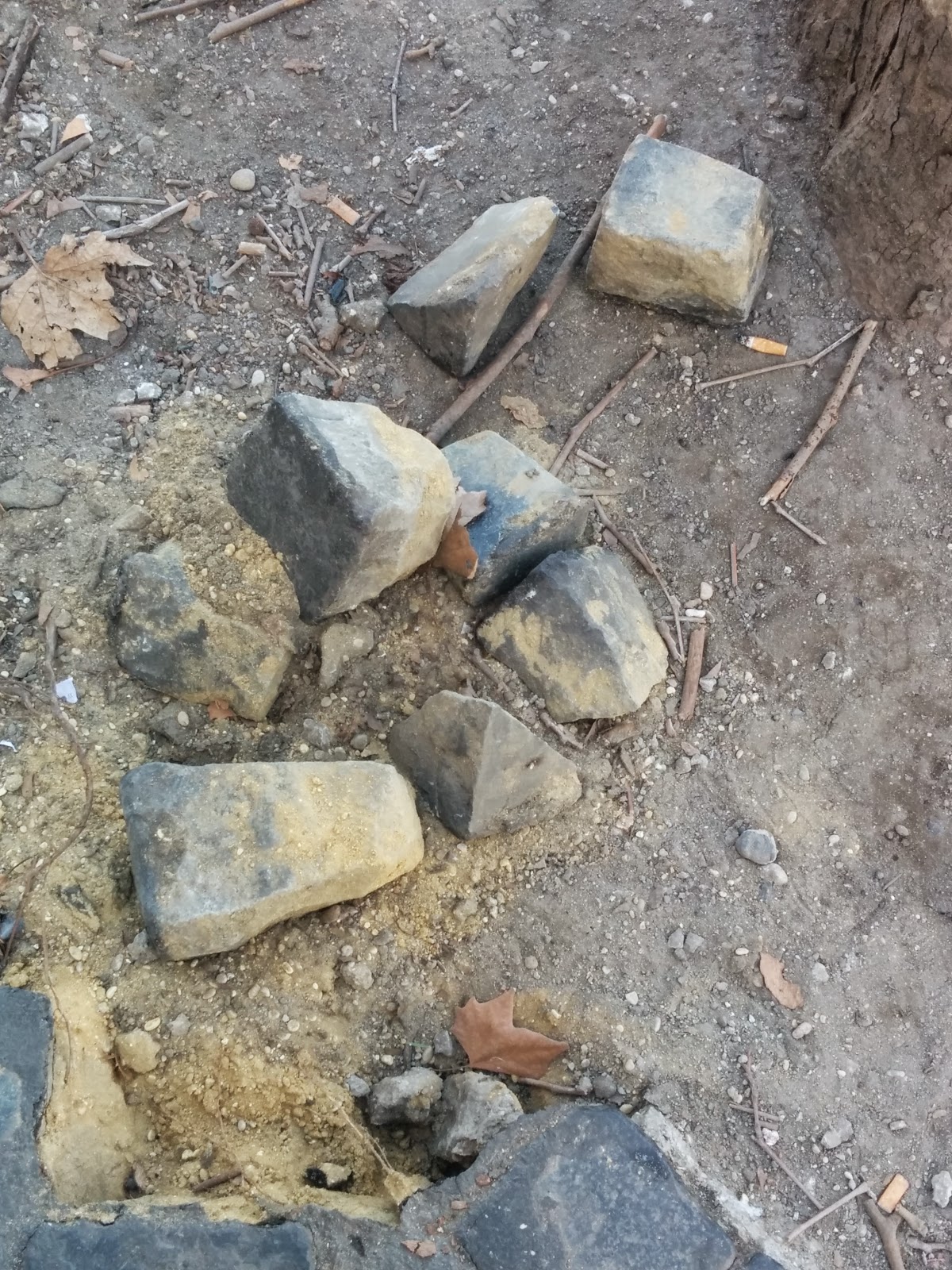American Academy in Rome facade and
entry piazza fountain, boat temporary
Building by Mead, McKim, and White
On January 12 we decided to go to a "shoptalk" by one of the current Fellows, about his work. Fellows are American artists, writers, and scholars awarded grants to pursue projects in Rome.
Adam Kuby was described as a sculptor and landscape architect, so we didn't quite know what he would be talking about. "Time and Materials" it was called. He had won the Garden Club of America fellowship. We figured it would be in English. Perhaps we didn't have high expectations.
We arrived on Gianicolo Hill at about 4 pm, only to realize that the talk wasn't at 5 but at 6:30 (I got the time wrong, let's not go into it). So we had time for dinner and a coffee in the neighborhood. That was good.
Turns out Kuby lives in Portland, Oregon. He does public art projects on a fairly big scale. To our delight, he did one in Seattle in an area very familiar to us. Listening to him was like a breath from the old country... that would be the Pacific Northwest.
He is interested in the difference between what humans want and what nature does. Humans build, and expect their work to persist unchanged. But natural forces are always at work to displace, change, and shift what people do. Trees, especially, will shift even boulders. Frost and water chip away at edges. Parts get buried under leaves and grass. Time is always at work on the products of human endeavor.
His park installations try to live within this process. For instance, a long straight line of stone, carved with a poem, set in the ground. Douglas firs are planted next to it. As they grow their increasing girth will push at the stone poem, creating a wandering line. That's a project in Portland.
He is interested in the difference between what humans want and what nature does. Humans build, and expect their work to persist unchanged. But natural forces are always at work to displace, change, and shift what people do. Trees, especially, will shift even boulders. Frost and water chip away at edges. Parts get buried under leaves and grass. Time is always at work on the products of human endeavor.
His park installations try to live within this process. For instance, a long straight line of stone, carved with a poem, set in the ground. Douglas firs are planted next to it. As they grow their increasing girth will push at the stone poem, creating a wandering line. That's a project in Portland.
Our Seattle friends may be familiar with his Seattle project. On the west side of Lake Union, between Dexter and Aurora Avenues, there was, until recently, an abandoned quarry grown to scrub trees, bushes, and weeds. We had no idea, despite driving by for years. A most invisible quarry, unseen by us.
The old quarry was named Dexter Pit Park, which was descriptive but you couldn't call it romantic. Then from 2006 to 2011, the city created a park. The land was renamed. Collective and community-based planning (the "Seattle Way") went slowly. The first landscape architect left the project by mutual consent. Kuby came in as replacement in 2008. Here is the city's summary of the project:
http://www.seattle.gov/parks/proparks/projects/wales.htm.
Here's a photo of the project underway, with some of Kuby's "rings" visible.

http://www.seattle.gov/parks/proparks/projects/wales.htm.
Here's a photo of the project underway, with some of Kuby's "rings" visible.

This picture-collage is from 2010 I believe; the park was inaugurated in 2011, and now it's 2015. It will look more grown-in now, I expect. I'm looking forward to seeing it, when I get to Seattle late next summer.
All of this, delightful as it was, just formed an introduction to his current project here in Rome.
Adam Kuby likes paving stones. We like them too, notes Julianne. They are called "sampietrini" because they were first used at St. Peter's basilica. In the early 1500's, the story goes, Pope Sixtus V was thrown from his carriage, which overturned on an uneven dirt road. Terrible for dignity; he demanded paving.
Now asphalt has intruded, but still much of central Rome is paved with basalt wedges. Here are a few shots:
Paving stones displaced by a tree or maybe
footsteps. Undisturbed at bottom edge.
Tree, top right. Note wedge shape.
For his presentation, Kuby had drawn gigantic wedges delicately balanced on other wedges. Wedges spouting water in fountains like baroque fishes. Wedges as sculptures in contraposto. Wedges in Piazza Navona, wedges near the gasometer in Ostiense, wedges at Testaccio Market.
Not to say that anything from this project will be realized in Rome. Things go forward here, but slowly, and he might not be in town long enough to manifest an homage to the paving stone. Never say it isn't possible, though. Rome is full of re-visioning of old things, and creative re-use.
By Nancy, with a comment from Julianne
Photos by Nancy, except for Seattle's Wales Park in process
That photo from the website for Seattle Parks Department




No comments:
Post a Comment